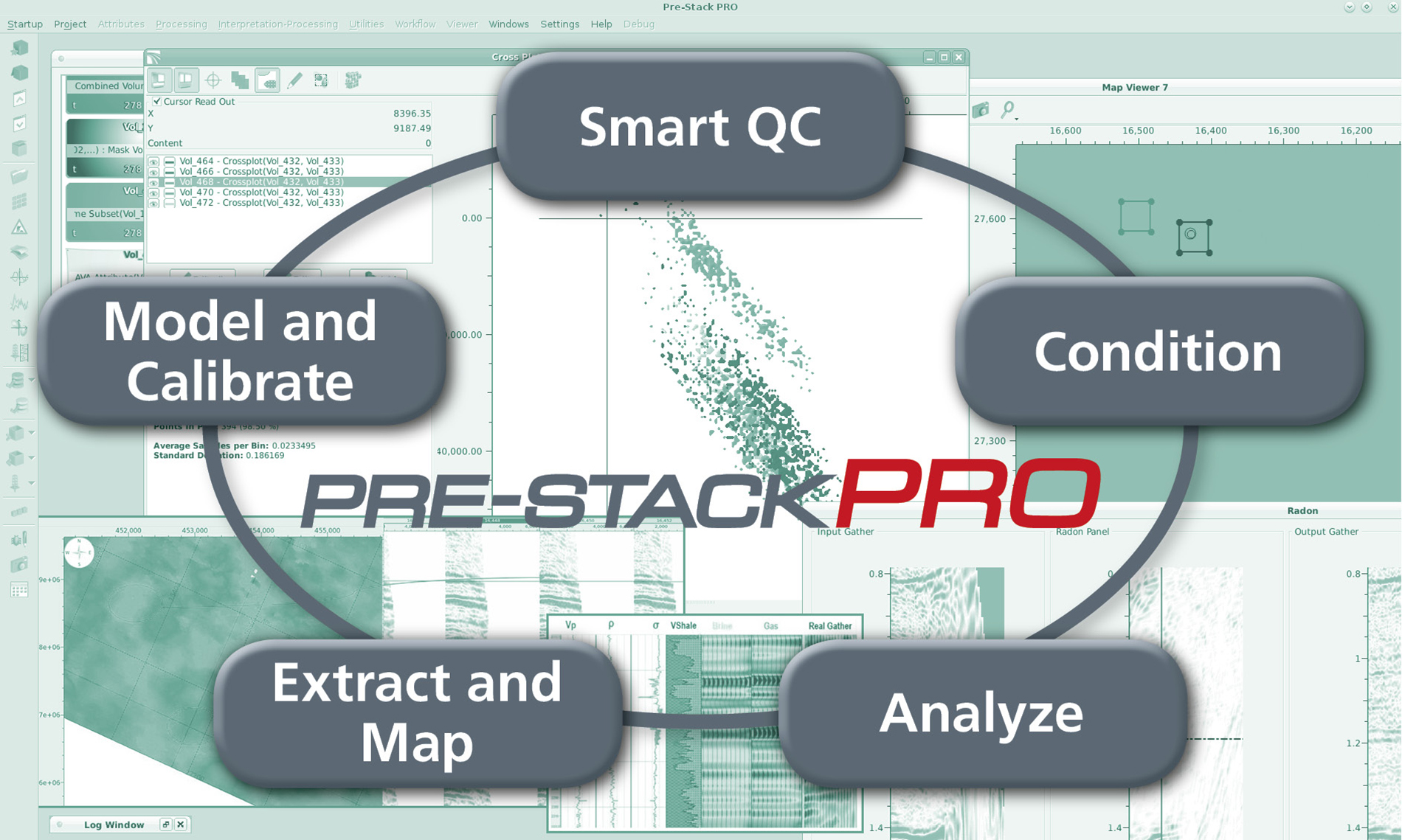Pre-Stack Pro / Pre-Stack Pro_azimuthal
Pre-Stack Pro is a pre-stack seismic analysis software that combines pre-stack visualization, processing, and interpretation in one powerful platform. By having it on the desktop, one can QC data, improve data quality, and generate the exact stacks and attributes needed to target promising anomalies.
Seismic migration provides images of the subsurface that are eligible for structural and quantitative interpretation. Attributes derived from the seismic as, e.g., amplitudes (i.e. reflection strength), instantaneuous phase and frequency allow interpretation of lithology and horizon thicknesses, the AVA (amplitude versus angle) attributes intercept and gradient are needed for describing the dependence of reflection coefficient on pore-fluid, and geometrical attributes as slope and curvature help to highlight fault zones and channels.
Pre-Stack Pro is an HPC software solution that supports efficient computation even in case of very large input data sizes and provides a powerful visualisation for flexible interpretation of the results.
Pre-Stack Pro was developed at ITWM, division HPC, by using in-house HPC-components, as a highly-efficient render-kerel for the visualisation, a fast parallel filesystem and the parallelisation software for high scalibility GPI. Pre-Stack Pro has become a product of the spin-off company SharpReflections. At ITWM, we are currently working on the extension of applying Pre-Stack Pro processes to azimuthal data.


